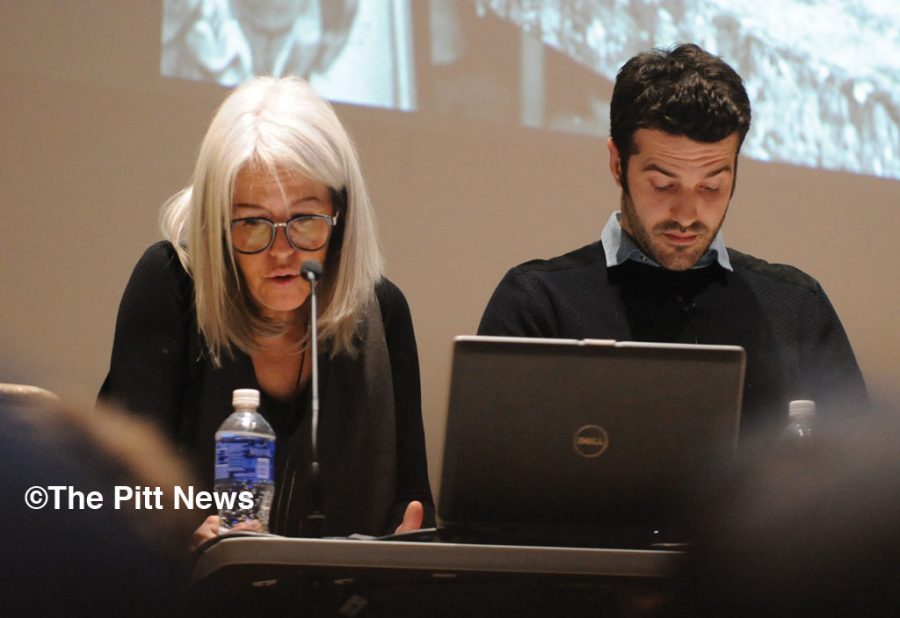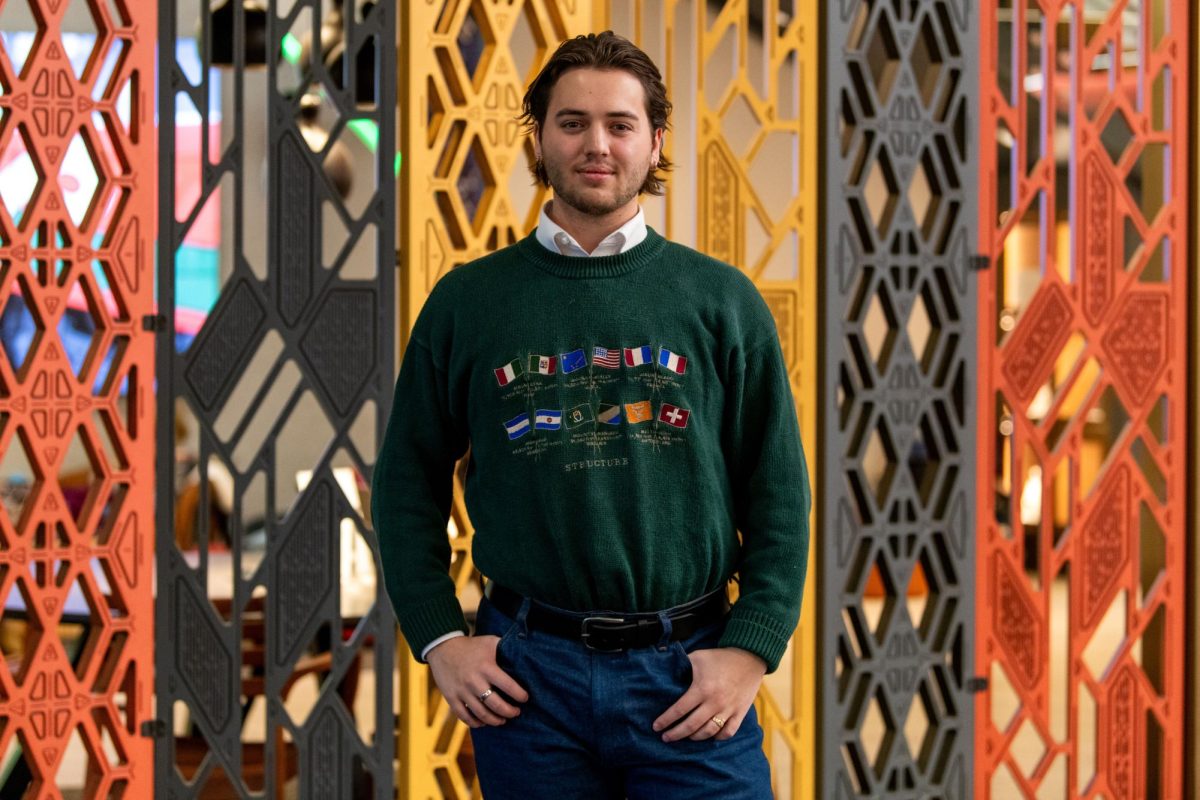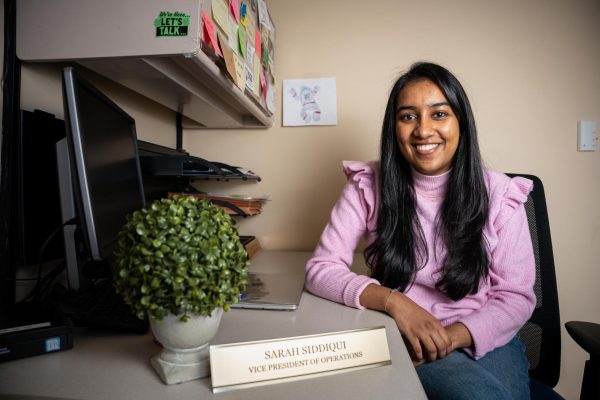Cavemen or Ancestors? Lecture defends origin of species
January 27, 2015
When learning about anthropology and human evolution, few people stop to think that the subjects studied are not simply foreign creatures of the past — each one of these individuals is someone’s ancestor, according to Elisabeth Daynès.
Daynès, the cofounder and director of Atelier Daynès, an art studio in Paris, spoke in Pitt’s Frick Fine Arts Building on Monday night to shed light on society’s biases about the appearance and roles of human evolution and prehistoric humans. The event, titled “Original Humans: What Did Extinct Humans Really Look Like?” was the first of a three-part series of lectures detailing topics on race, sex and human evolution.
The event was sponsored by several organizations and departments, including Pitt’s Honors College and Department of Anthropology, as well as The Gender Sexuality and Women’s Studies Program at UPMC’s Health Services Division.
The audience overfilled the roughly 200-seat Frick Fine Arts auditorium, and members of the audience included both the general public and Pitt students.
The two forthcoming talks, which will be held on Feb. 16 and March 2, will focus on the gender issues in human evolution and race and the biopolitics of human ancestry, respectively.
Daynès said society feeds a depiction of extinct humans that detach us from the fact that these were real people.
“Early hominids are represented as chimpanzees. They are shown with huge eyebrows, they are habitually given dark skin, and noses were wider,” Daynès said. “All of this was used to distance us, as much as possible, from our own ancestors.”
Daynès called prehistoric humans “creators of beauty,” and questioned why they can’t be beautiful themselves. She said one of her goals is to raise awareness about the diversity of the human species.
The three-part series was organized by Jeffrey Schwartz, an anthropology professor at Pitt.
“I’ve always been interested in the history of ideas, and what went from assumption to fact in people’s minds,” Schwartz said.
Schwartz said the series aims to shed light on ideas that have been reconstructed about human evolution.
“There are these biases about, ‘If you’re from Africa, you must look like this, or if you’re male or female, you must have certain roles.’ I wanted the series to talk about these biases from different perspectives.”
According to Schwartz, attending these lectures is important to Pitt students to gain perspective about their place in nature as human beings.
“One of the things we have to understand is where we came from. We can’t keep going ahead with these stereotypes of race or gender roles,” Schwartz said.
As part of her work, Daynès sculpts hyper-realistic reconstructions of hominids based on fossils. These reconstructions are displayed in museums worldwide, including the Neanderthal Museum in Germany.
In 2006, Daynès’ reconstruction of Tutankhamun, or the Egyptian pharaoh King Tut, was displayed on the cover of National Geographic Magazine. Her reconstruction process is unique in that she makes sure to depict prehistoric humans in a way that makes them more comparable to the appearance of humans today, rather than a stereotypical animalistic depiction.
Daynès said she prides herself in paying attention to each detail to ensure the depictions of these extinct humans have similar features to today’s humans.
“Attention to detail is what makes this complexity possible. In visual arts, one cannot stick to generalities,” Daynès said.
Sophia Taborski, a senior majoring in history and classics, attended the three-part program last year and was in attendance again Monday night.
“It seemed like an interesting cross-disciplinary topic that I didn’t want to miss,” Taborski said.
Daynès plays her part in trying to rectify these biases in her reconstruction of prehistoric humans and said that she is happy to have made her own small contribution in changing our view of prehistoric humans.
“It’s our own ancestors we are representing. Not an inferior species,” she said.








